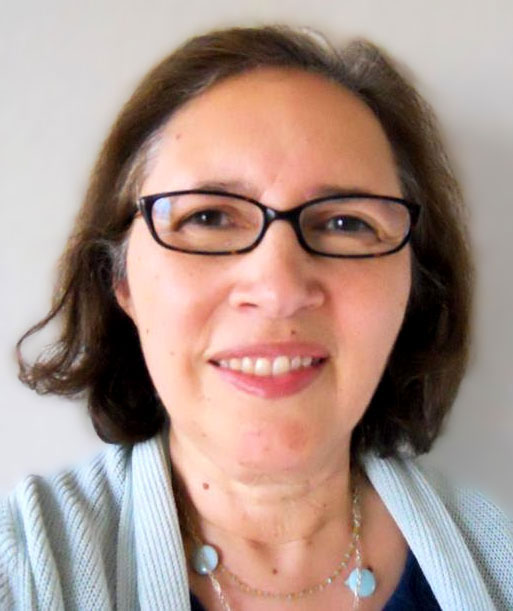News | NCST hosts USC's Hilda Blanco: Optimizing Opportunities for Housing from Failing Shopping Malls
Stop the VideoNews

NCST hosts USC's Hilda Blanco: Optimizing Opportunities for Housing from Failing Shopping Malls
Wednesday, January 19, 2022
by Micha Kempe, USC Class of 2019
On December 2, 2021, the University of California, Davis-led National Center for Sustainable Transportation (NCST) hosted a webinar, Optimizing Opportunities for Housing from Failing Shopping Malls, featuring the research of Dr. Hilda Blanco, with guests Casey Kempenaar and Meghan Huber. Dr. Blanco is Professor Emeritus at the University of Washington’s Department of Urban Design and Planning and a researcher with METRANS Transportation Consortium at USC. Casey Kempenaar is the Community Development Director for the City of Citrus Heights, California and Meghan Huber is the Economic Development and Communications Manager for Citrus Heights.

Dr. Hilda Blanco
In the webinar, Dr. Blanco shared the findings from her recent study of distressed malls in California metropolitan areas. In this study, she estimated the potential of these malls for mixed-use development, including housing. Her case studies included malls both with and without redevelopment plans and illustrated issues that could hinder or facilitate redevelopment. She also presented sustainability criteria by which to measure the benefits and costs of redevelopment.
Dr. Blanco shared that industry experts such as Credit Suisse and Cushman Wakefield predict that Class A malls will likely survive but others may undergo redevelopment, adding non-retail uses. She further noted that these experts forecast that the reuse of dying malls as mixed -use projects will be increasingly popular in coming years.
In the webinar Dr. Blanco detailed her research on four malls: Parkway Plaza, San Diego Region; Southland Mall, San Francisco Bay Area; Vallco Mall, San Francisco Bay Area; and Sunrise Mall, Sacramento Region, all of which are characterized by high prices and low affordability when compared to the rest of the state and the nation.
Speakers Kempenaar and Huber were particularly interested in Sunrise Mall, the mall City Heights, in the greater Sacramento area. They explained that the City of Citrus Heights hopes to transform its Sunrise Mall and the surrounding area into a premier regional destination and a flourishing center of community life where residents and visitors shop, work, live, and play. They noted that the Sunrise Mall sits on 95 acres, and has 1,400,000 square feet of building area, surrounded by 6,400 paved and striped surface parking spaces. The proposed uses for this mall include 2,200 residential units, 960,000 square feet of office space, 480 hotel rooms, 450,000 square feet of community/institutional uses, and 320,000 square feet of retail. They note that many expect the redevelopment of the Sunrise Mall to be an ideal solution to meet the needs for these uses of both the current and future population.
Webinar attendee Emily Ernst, Neurofeedback Technician at Peak Brain Institute and long-time Sacramento resident said, “The restructuring of the Sunrise Mall is going to be a better fit for the larger population in Sacramento. The housing crisis is real. We need affordable housing more than an empty Sears.”
On a personal note, I appreciate the opportunity to cover this webinar and share this synopsis as it uniquely addresses the needs of the population for various uses of the built environment. The research and discussion recognized that we have numerous existing structures which are no longer well utilized by their original use and investigated options for more useful and ideally more sustainable designs for them. It reinforces my belief that we would benefit from reassessing not only our existing structures, but our assumptions about what their best and most productive uses.
About the author:
Micha Kempe earned a Bachelor of Science degree in Real Estate Development with a minor in Business Administration from University of Southern California and is a frequent contributor to METRANS publications. Kempe founded the USC Mobility Lab, a collaboration with METRANS and USC Transportation focusing on analyzing mobility data and solving transportation problems and received the Order of the Laurel and the Palm upon graduation, the highest honor accorded to less than one percent of undergraduates completing their programs of study, recognizing leadership that touches multiple facets of university life.
News Archive
- December (1)
- November (6)
- October (4)
- September (2)
- August (3)
- July (4)
- June (3)
- May (7)
- April (8)
- March (11)
- February (8)
- January (7)
- December (7)
- November (8)
- October (11)
- September (11)
- August (4)
- July (10)
- June (9)
- May (2)
- April (12)
- March (8)
- February (7)
- January (11)
- December (11)
- November (5)
- October (16)
- September (7)
- August (5)
- July (13)
- June (5)
- May (5)
- April (7)
- March (5)
- February (3)
- January (4)
- December (4)
- November (5)
- October (5)
- September (4)
- August (4)
- July (6)
- June (8)
- May (4)
- April (6)
- March (6)
- February (7)
- January (7)
- December (8)
- November (8)
- October (8)
- September (15)
- August (5)
- July (6)
- June (7)
- May (5)
- April (8)
- March (7)
- February (10)
- January (12)















